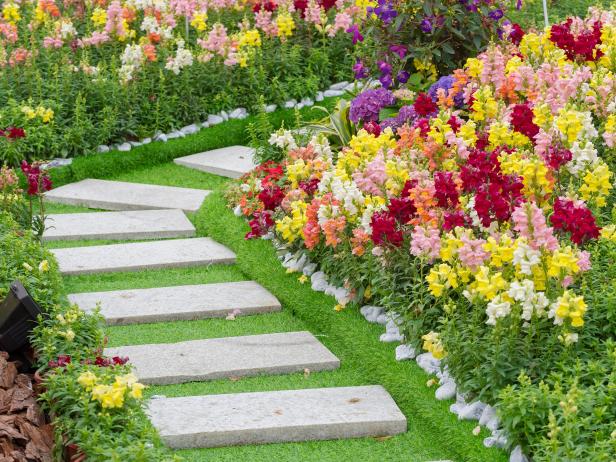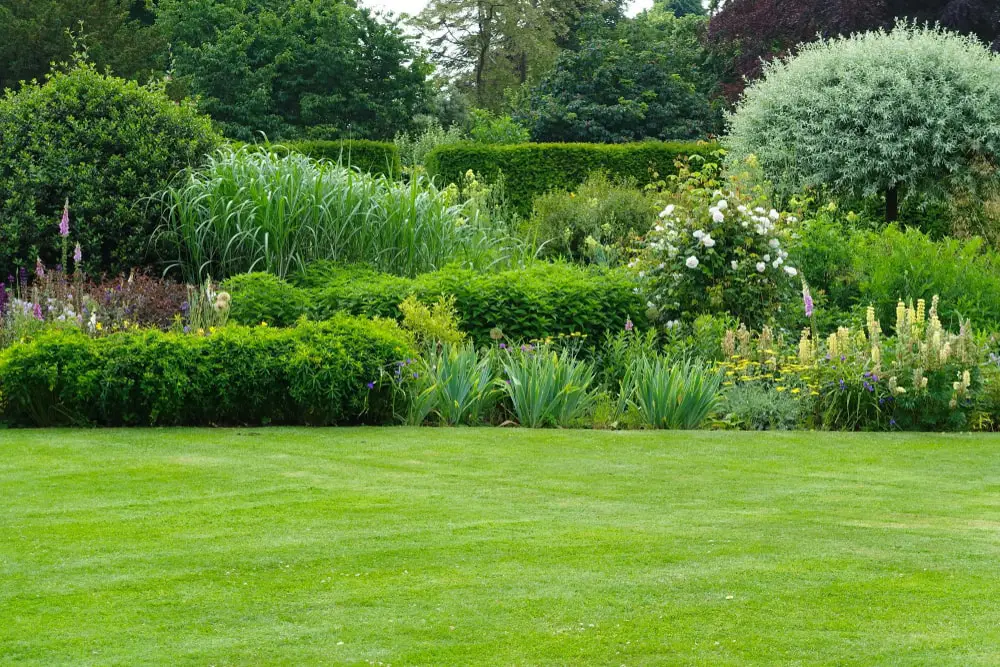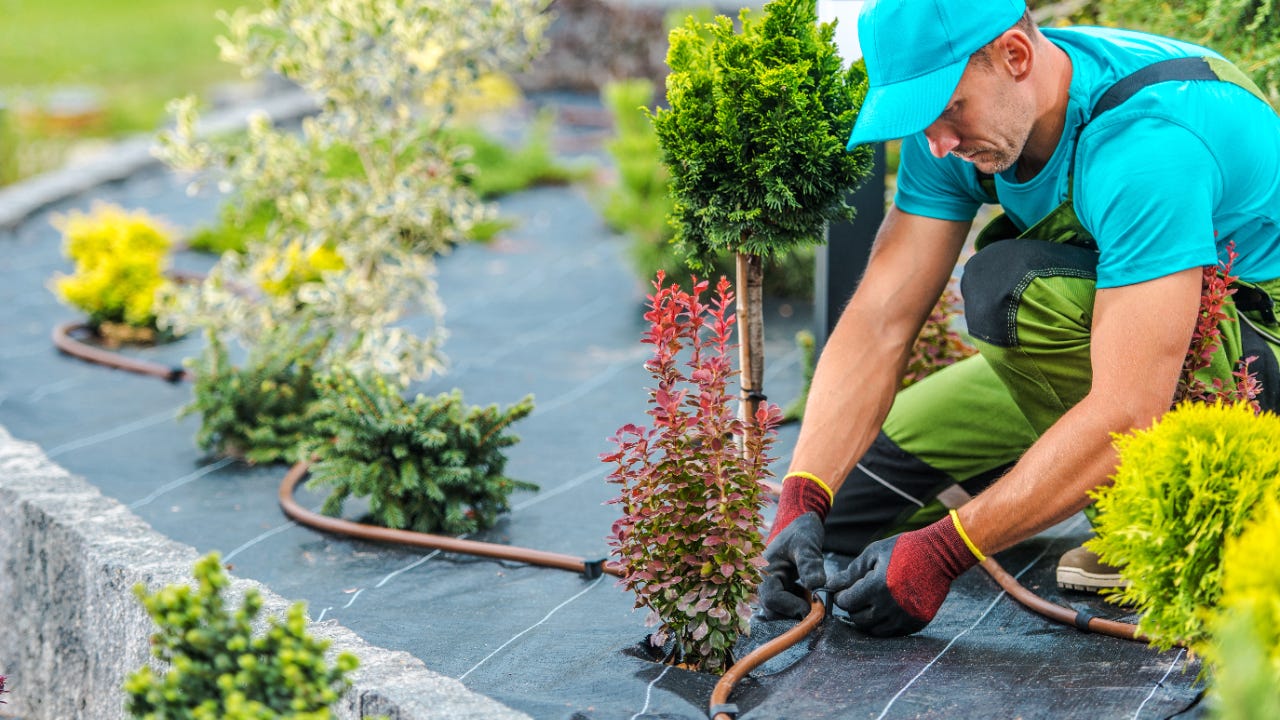Discover the Benefits of Sustainable Palm Desert Landscaping Techniques
Wiki Article
A Comprehensive Overview to Creating and Implementing Effective Landscaping Solutions
The art and science of landscape design prolong past simple aesthetics; they include a thoughtful integration of design concepts, environmental stewardship, and sensible execution. What approaches can one use to make certain these landscapes not only flourish yet additionally prosper in consistency with their surroundings?
Recognizing Landscape Layout Concepts
One could question what foundational elements add to reliable landscape layout. At its core, successful landscape style hinges on several crucial concepts that guide the plan and selection of aspects within an area. These concepts include unity, equilibrium, proportion, and rhythm, each serving to produce an unified exterior setting.Unity describes the natural partnership amongst different components, ensuring that they function together cosmetically and functionally. Balance can be accomplished through unbalanced or balanced plans, permitting the landscape to feel steady and inviting. Percentage entails comprehending the range of elements in regard to each various other and the surrounding atmosphere, advertising aesthetic consistency and comfort.

Assessing Your Outdoor Space
Before executing the concepts of landscape design, a detailed analysis of your exterior area is essential. This first evaluation helps define the range of your landscaping project and makes certain that your design lines up with the unique features of your residential or commercial property. Begin by analyzing the measurements of your area, taking accurate measurements to recognize the readily available location for various elements such as paths, gardens, and outdoor patios.Next, observe the existing attributes of your landscape, consisting of topography, soil high quality, and water drainage patterns. These factors dramatically affect plant choice and positioning. In addition, analyze the sunshine exposure across different locations throughout the day, as this will certainly affect the types of plants that grow in your yard.
Think about the microclimates developed by structures, trees, and other barriers, as they can affect temperature and wetness levels. Take note of any kind of existing plants or hardscape aspects that you desire to keep or get rid of. This thorough analysis lays the groundwork for a knowledgeable and effective landscape design solution, making sure that your style is not only aesthetically pleasing yet sustainable and also practical for several years ahead.
Sustainable Landscape Design Techniques
Incorporating sustainable landscape design methods is necessary for creating an ecologically liable exterior space. These techniques not just advertise ecological balance but additionally improve the useful and aesthetic worth of a landscape. One fundamental strategy is the application of native plants, which call for much less water and maintenance while sustaining local wildlife. Applying efficient irrigation systems, such as drip irrigation, decreases water waste and guarantees that plants receive ample wetness.
An additional efficient strategy is the critical placement of trees and shrubs to give all-natural windbreaks and color, therefore lowering power prices (Palm Desert Landscaping). Rain gardens can be integrated right into the landscape style to take care of stormwater runoff successfully, filtering system contaminants before they go into rivers
Selecting the Right Plants
Choosing the right plants for your landscape is important to accomplishing both aesthetic allure and ecological consistency. The procedure begins with an understanding of your neighborhood environment, dirt conditions, and the certain microenvironments within your landscape. Assessing factors such as sunshine exposure, dampness degrees, and existing vegetations will certainly help you pick plants that grow in your unique setup.Think about incorporating indigenous plants, as they are well-adapted to regional problems, need much less maintenance, and support neighborhood wild animals. In addition, selecting a varied variety of types can enhance biodiversity while decreasing the risk of illness and parasite outbreaks. It is vital to evaluate the growth practices, flowering durations, and seasonal colors of potential plants to discover here develop a dynamic and cohesive landscape.
In addition, believe regarding the meant use the room; as an example, if the location will experience high foot website traffic, select durable ground covers. By attentively selecting plants that line up with both your ecological demands and visual objectives, you can develop a lasting landscape that not only enhances your building but additionally contributes positively to the bordering community.

Implementation and Maintenance Approaches
As soon as the best plants have actually been selected for your landscape, the focus shifts to reliable execution and ongoing maintenance approaches. Successful setup begins with correct website prep work, that includes dirt testing to determine nutrient degrees and pH, complied with by changing the soil as needed. Meticulously arrange plants according to their growth behaviors and light needs, making certain ample spacing to promote healthy and balanced development.Irrigation is an important element of application. Develop a watering timetable that considers the particular requirements of each plant varieties, adjusting for seasonal changes. Making use of drip watering systems can improve water efficiency and reduce drainage.
Maintenance approaches should be carried out to guarantee the longevity and vitality of your landscape. Normal jobs include weeding, mulching, and trimming to manage development and avoid illness. Fertilization must be carried out based upon soil tests, supplying the essential nutrients without over-fertilizing.
Monitoring for insects and diseases is vital; early discovery can avoid significant damages. Seasonal adjustments to maintenance regimens, such as preparing and winterizing perennials for springtime development, will ensure that your landscape remains aesthetically enticing and healthy year-round.
Conclusion
Successful application and ongoing upkeep better make sure the durability and vigor of landscapes. By integrating these components, landscapes can be transformed right into beautiful, practical environments that advertise biodiversity and contribute favorably to area well-being.
One could question what fundamental elements contribute to reliable landscape design. At its core, effective landscape layout hinges on a number of vital principles that assist the arrangement and selection of aspects within a space.Choosing the right plants for you could try this out your landscape is crucial to accomplishing both visual allure and eco-friendly consistency. It is vital to assess the growth practices, growing periods, and seasonal shades of potential plants to create a dynamic and natural landscape.
As soon as the ideal plants have been selected for your landscape, the focus changes to efficient application and recurring maintenance methods.
Report this wiki page